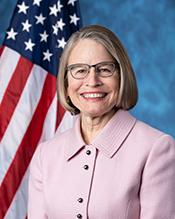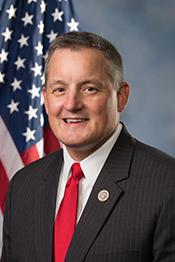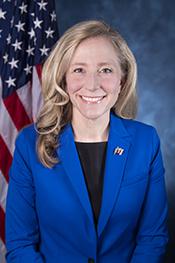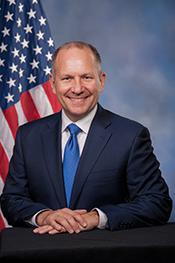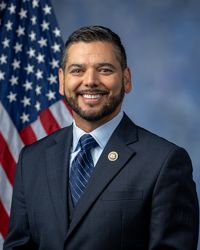0
0
0
SERVICE Act of 2021
12/31/2022, 5:05 AM
Summary of Bill HR 4571
The SERVICE Act of 2021, also known as Bill 117 hr 4571, is a piece of legislation currently being considered by the US Congress. The main goal of this bill is to provide support and resources to individuals and communities affected by the COVID-19 pandemic.
The bill includes provisions for expanding access to mental health services, increasing funding for substance abuse treatment programs, and improving access to healthcare for underserved populations. It also aims to address the economic impact of the pandemic by providing financial assistance to small businesses and individuals who have been negatively affected.
Additionally, the SERVICE Act of 2021 includes measures to support frontline workers, such as healthcare workers, first responders, and essential workers. This includes providing hazard pay, access to personal protective equipment, and resources for mental health support. Overall, the bill seeks to address the wide-ranging impacts of the COVID-19 pandemic on individuals, communities, and the economy. It aims to provide much-needed support and resources to help the country recover and rebuild in the wake of this unprecedented crisis.
The bill includes provisions for expanding access to mental health services, increasing funding for substance abuse treatment programs, and improving access to healthcare for underserved populations. It also aims to address the economic impact of the pandemic by providing financial assistance to small businesses and individuals who have been negatively affected.
Additionally, the SERVICE Act of 2021 includes measures to support frontline workers, such as healthcare workers, first responders, and essential workers. This includes providing hazard pay, access to personal protective equipment, and resources for mental health support. Overall, the bill seeks to address the wide-ranging impacts of the COVID-19 pandemic on individuals, communities, and the economy. It aims to provide much-needed support and resources to help the country recover and rebuild in the wake of this unprecedented crisis.
Congressional Summary of HR 4571
Supporting Expanded Review for Veterans In Combat Environments Act of 2021 or the SERVICE Act of 2021
This bill expands eligibility for Veterans Health Administration mammography screenings to veterans who served in certain locations during specified periods, including those who were exposed to toxic substances at such locations.
The specified locations and corresponding time periods include
- Iraq between August 2, 1990, and February 28, 1991, and from March 19, 2003, until burn pits (areas used for burning solid waste in open air without equipment) are no longer used in Iraq;
- the Southwest Asia theater of operations, including Kuwait, Saudi Arabia, Oman, and Qatar, from August 2, 1990, until burn pits are no longer used in such locations; and
- Afghanistan, Djibouti, Syria, Jordan, Egypt, Lebanon, and Yemen from September 11, 2001, until burn pits are no longer used in such locations; and
- other locations and time periods as determined by the Airborne Hazards and Open Burn Pit Registry.
The bill specifies that the listed locations do not include bodies of water around or airspace above such locations.
Read the Full Bill
Current Status of Bill HR 4571
Bill HR 4571 is currently in the status of Bill Introduced since July 20, 2021. Bill HR 4571 was introduced during Congress 117 and was introduced to the House on July 20, 2021. Bill HR 4571's most recent activity was Referred to the Subcommittee on Health. as of September 8, 2021
Bipartisan Support of Bill HR 4571
Total Number of Sponsors
1Democrat Sponsors
0Republican Sponsors
1Unaffiliated Sponsors
0Total Number of Cosponsors
38Democrat Cosponsors
20Republican Cosponsors
18Unaffiliated Cosponsors
0Policy Area and Potential Impact of Bill HR 4571
Primary Policy Focus
Armed Forces and National SecurityPotential Impact Areas
- Afghanistan
- Africa
- Asia
- Cancer
- Conflicts and wars
- Congressional oversight
- Djibouti
- Egypt
- Fires
- Hazardous wastes and toxic substances
- Iraq
- Jordan
- Kuwait
- Lebanon
- Medical tests and diagnostic methods
- Middle East
- Military operations and strategy
- Oman
- Qatar
- Saudi Arabia
- Syria
- Veterans' medical care
- Women's health
- Yemen
Alternate Title(s) of Bill HR 4571
To amend title 38, United States Code, to direct the Under Secretary for Health of the Department of Veterans Affairs to provide mammography screening for veterans who served in locations associated with toxic exposure.
SERVICE Act of 2021
SERVICE Act of 2021
Supporting Expanded Review for Veterans In Combat Environments Act of 2021
Comments
Sponsors and Cosponsors of HR 4571
Latest Bills
Holocaust Expropriated Art Recovery Act of 2025
Bill S 1884December 12, 2025
Enduring Justice for Victims of Trafficking Act
Bill S 2584December 12, 2025
Increasing Investor Opportunities Act
Bill HR 3383December 12, 2025
Great Lakes Fishery Research Reauthorization Act
Bill S 2878December 12, 2025
Electric Supply Chain Act
Bill HR 3638December 12, 2025
State Planning for Reliability and Affordability Act
Bill HR 3628December 12, 2025
A joint resolution providing for congressional disapproval under chapter 8 of title 5, United States Code, of the rule submitted by the Office of the Secretary of the Department of Health and Human Services relating to "Policy on Adhering to the Text of the Administrative Procedure Act".
Bill SJRES 82December 12, 2025
Providing for consideration of the bill (H.R. 2550) to nullify the Executive Order relating to Exclusions from Federal Labor-Management Relations Programs, and for other purposes.
Bill HRES 432December 12, 2025
Mining Regulatory Clarity Act
Bill HR 1366December 12, 2025
Legacy Mine Cleanup Act of 2025
Bill S 2741December 12, 2025
Dr. Kate Hendricks Thomas SERVICE Act
Bill S 2102November 9, 2023
